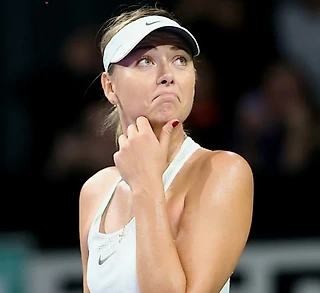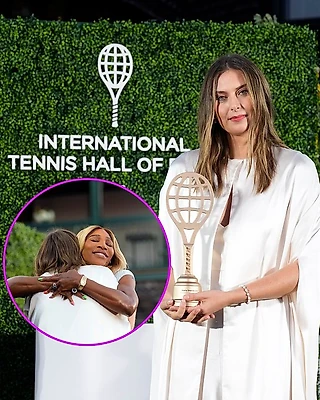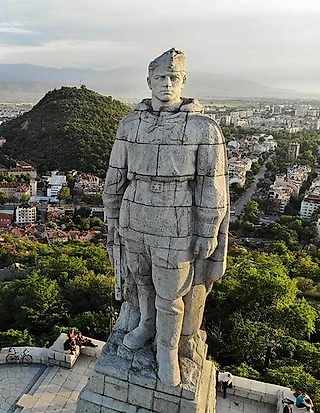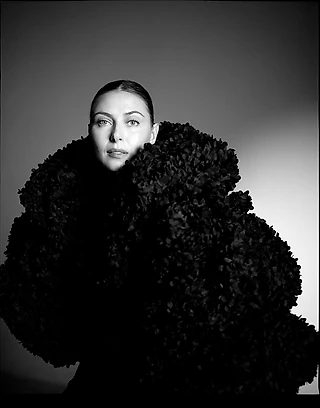Теннисная правда
Рассказ профессионального теннисиста.
Коротко расскажу, о чем речь.
Майкл Рассэлл (Michael Russell) на 92-ом месте в рейтинге АТП.
Он рассказывает, насколько трудно быть теннисистом и насколько теннис прекрасный спорт.
За 15 лет он получил $2.1 миллионов долларов призовых.
Кажется, жизнь у него люкс, он стал миллионером.
Однако расходы никак не маленькие. Он говорит, что в последний год они были $75,000.Транспортные расходы - $35,000
Налоги тоже представляют солидную часть - от $75,000
Даже такое простое дело, как натяжка струн ракеток, стоит где-то $300 на турнир, или $9,000 в год.
Поэтому игрокам вне ТОП-100 трудно с деньгами.
В прошлом году Майкл получил $210,000 призовых, плюс $60,000 от спонсоров и участия в выставочных мероприятиях. Федерер получил в этот период $45 миллионов только от своих спонсоров.
"ТОП-4 игроки имеют и тренера, и физио, и спарринга, 5-6 человек работают на них на зарплате", говорит Майкл. "Однако, если другие теннисисты захотят сделать это, обанкротятся".
Существует большая разница между призовыми на турнирах ATP World Tour и турнирах "Challenger" и "Futures". Например, молодой игрок Pablo Carreno Busta уже имеет 71 победу в этом году, но заработал только $120,000 призовых. Призовые некоторых турниров, где он участвовал, были только $1,300 и он, вероятно, платил из своего кармана, чтобы сыграть там.
"Если проиграешь в первых кругах на "Challenger", получаешь только $500 или $1,000 А чтобы быть на НОЛЬ финансово надо достичь полуфинала.
Разница (в финансовом плане) между ТОП игроками и остальными увеличивается постоянно.
Майкл дает пример, что быть теннисистом - это как быть бухгалтером маленькой фирмы. Надо очень внимательно планировать все и вести точные отчеты, потому что теннисисты имеют расходы, которые надо оплачивать , несмотря на то, получил ли деньги от тенниса или нет.
Часто получается так, что в профессиональном плане теннисисту надо и хорошо сыграть в каком-то турнире, но финансово он теряет деньги.
Майкл участвовал в 32 турнирах, но 40% от его доходов пришли от его участия в 4 ТБШ.А если у игрока будет травма, тогда год может превратиться в финансовую катастрофу.
Проблема и в том, что в баскетболе и футболе Майкл может заработать больше и легче. Поэтому дети выбирают больше баскетбол, футбол, чем теннис.
Зная эти проблемы, теннисная федерация США (УСТА) помогает молодым игрокам ,оплачивая расходы на тренеров и транспорт.
Однако, если призовые турниров "Challenger" и "Futures" останутся те же самые, тогда много игроков вне ТОП-100 будут вынуждены повесить ракетку : заработанных денег не будет достаточно, чтобы поддерживать нормальную жизнь.
Есть надежда, что АТП понимает эту проблему и найдет решение скоро.
How The 92nd-Ranked Tennis Player In The World Earns A Comfortable Living
In July Michael Russell won a tennis tournament in Manta, Ecuador, logging 8,628 miles just to get there and back. It was one of his best performances all year and the victory netted him $5,000, yet he barely broke even on the week-long venture. Welcome to the bizarre and trying world of professional tennis.
Russell is the 92th ranked player in the world. As one of the hundred best players in his sport, he makes a comfortable living, but he doesn’t have millions of advertising dollars pouring in, not like jet-setting Roger Federer. His lifetime prize money ($2.1 million earned over 15 years) suggests a life of extravagance, but that figure ignores the expenses required to play professionally, which Russell estimated at $75,000 last year alone. Travel soaked up $35,000. Taxes ate up another significant portion of the $75,000. Even racket stringing constituted a significant expense. Up to $300 a tournament, the stringing jobs he needed over the year added up to about $9,000. With expenses so high, the men and women ranked outside the top 100 often struggle to scrape by on tour.
Russell spoke to FORBES from his hotel room in Montreal, where he was competing in the qualifying tournament for the Rogers Cup, about the financial reality of playing pro tennis. He made $210,000 in prize money over the past year, earning an additional $60,000 in sponsorships and exhibitions. Federer, the gold standard in tennis (down to the gilded accents on his Wimbledon shoes and bag), pocketed a cool $45 million in sponsorship money during the same period.
As the sport has become more physical and competitive due to better racket technology, slowed court surfaces and unparalleled athleticism (looking at you, Nadal), players are paying more to get a leg up on their opponents. Expect that trend to continue. “The top four players not only have a coach, but also a physio, a doctor, a hitting partner with them. Four, five, six people on their payroll,” Russell said. Unfortunately, hiring a tennis SWAT team would bankrupt the vast majority of pros. At most tournaments, Russell must adopt a bootstrapper’s mentality: finding the best hotel deals, sharing an on-site masseuse with other players, working frequent flyer miles and other perks, and so on.
Russell’s in-form play, from his semifinal result in Newport to the quarterfinals at Memphis, means that he’s contested the majority of his tournaments this year on the main ATP World Tour and not the Challenger and Futures tours (the USTA Pro Circuit a.k.a. tennis’ minor leagues). Competing on tennis’ premier tour is vital for pros to prosper. Rising youngster Pablo Carreno Busta, for example, has already won a ridiculous 71 matches this year, 66 of which were Challengers and Futures, yet he’s only earned $120,000 in prize money. Some of those Futures events Carreno Busta conquered paid out a meager $1,300. He likely lost money even when he was winning.
About tennis’ minor leagues Russell noted, “If you lose in the early rounds of Challengers, you only pocket about $500 to $1,000. To break even, you have to make the semifinals. Keep in mind that a lot of the Challengers don’t provide hospitality, pay for travel and other services.” Following Russell’s logic, a player must earn around $2,000 to $3,000 each week he or she plays just to stay afloat.
The gulf in pay between the top players and everyone else is only widening. Total prize money for the U.S. Open, where only the top 100 players or so are granted direct entry, has increased 429% since 1990, with first round losers making $23,000 this year. For the Challenger events, prize money has remained flat over the same period.
The Manta event Russell won in July is a Challenger, and it’s a great example of how rising costs and flat wages create perverse effects like losing money when you win a tournament.
Russell emphasized the importance of making smart financial choices on tour in the face of high costs and competition, for instance locating his home base in economically friendly Houston. K. Sean Packard, a CPA who specializes in tax planning for pro athletes, said that tennis players’ enormously complicated finances make such decision making all the more remarkable. “If you’re a tennis player, you’re doing accounting for a small business. You’re self-employed, travelling a ton, paying taxes everywhere you play. You have a lot of these advance expenses that you have to pay no matter how well you do in tournaments.”
Packard noted about Russell’s win in Manta, “Professionally it was good that he went to Ecuador since he won. Financially, it may have lost him money. But it could have helped his chances to make the main draw at the slams. It’s all about trying to get into the big tournaments.” Packard’s last point underscores a harsh reality for lower-ranked pros. Russell played 32 tournaments, four of them Grand Slams, with a whopping 40% of his total prize money coming from those four tilts.
Russell has posted great results this year at ATP events, including his stay in Newport, which earned him $22,280 (not bad for a week’s work). But players who find it harder to break through on the ATP tour live and die by the Slams, which means that one or two untimely injuries can turn a promising year into a catastrophe.
To counter this, the ATP has developed a pension program that helps provide financial support for players after their careers. The pension kicks in for the ATP’s top 125 singles and top 40 doubles players who qualify year-end for five years. (Slams, Challenger and Futures points don’t count.)
With the world number one and the 125th-ranked player who qualify getting the same amount in distributions, it’s an innovative, even socialistic program. To benefit from the pension plan, players must compete mainly on the ATP World Tour. Since the bulk of revenue comes from the ATP, this makes sense but it does omit players outside of the top 125 from the mix, the players who could really use the post-tennis financial security. Jorge Escallon, the ATP’s Director of Treasury/Benefits Administration, said that the pension rewards players who have made a career of pro tennis, noting “with the current structure of the ATP pension plan, the top players are significantly contributing to one of the main benefits of tour players.”
The pension plan exemplifies the ATP’s focus on making tennis a viable career option for a greater number of pros, despite the rise in costs for players. Escallon added, “Over the last two years, the ATP has increased its pension contribution by more than 100%. The goal is to provide a strong benefit for players that compete on the [the ATP World Tour] tour regularly.”
And if players are not competing on the ATP tour regularly, the math for staying in the game makes less sense. Patrick McEnroe, General Manager of Player Development at the United States Tennis Association, said the possibility of talented youngsters eschewing tennis for more lucrative sports “is what keeps me up at night. If you have a 7 year old, it’s much easier to sign him up for basketball than tennis. The challenge with tennis, is that once they’re exposed, it takes a lot of time and organization to make players significantly better.”
McEnroe understands the struggle for lower-ranked players first-hand. “I was a journeyman player. I couldn’t afford a full-time coach until I was in my mid-20s.” He commended Russell’s recent good form but added, “If he were a pro basketball player he’d be making significantly more.”
Players in the States benefit from a player development program with the USTA’s resources. The USTA covers travel and coaching expenses for talented juniors in many instances. In recent years the USTA has partnered with regional centers for 10-and-under tennis and junior development with the goal of reaching and refining more phenoms.
Still, more work needs to be done to ensure more players’ financial security. Should Challenger prize money continue to flatline, players outside the top 100 will be squeezed even more, increasingly forced to retire for lack of funds. Young players who show promise may be increasingly diverted to other sports that reward its pros more handsomely. Players, fans and the sport will suffer.
There’s a simple reason why Michael Russell is still playing at an age when most pros have hung up their rackets: “I can still clear over $200,000 annually.”
He can leave the game whenever he wants, on his terms, but players struggling in tennis’ lower ranks can’t afford that luxury. Russell did note that the ATP in recent years has increased the amount of points players earn when they win at the lower levels, which boosts their chances to play in bigger and better-paying tournaments, and Escallon told me that the ATP will soon announce more initiatives to help lower-ranked players in the hopes that talented athletes will continue to flock to professional tennis. Hopefully these measures will ensure that tennis remains attractive not only to those at the top but also everybody talented enough to turn pro.
For Russell though, the passion and the financial positives are clear. “Tennis is a tough sport,” he said. “But it’s a great sport.”
http://www.forbes.com/sites/miguelmorales/2013/08/26/aces-into-assets-how-michael-russell-has-made-a-profitable-career-in-the-demanding-world-of-pro-tennis/









BBC Tennis @bbctennis 40m
British tennis announced today that doubles players will no longer receive funding.
:) :) :)
Право получать помощь имеют игроки в возрасте 17 - 24 лет.
Игроки обязаны заплатить обратно 20% от своих призовых в год, но не больше суммы помощи.
Не имеет значение где будут тренироваться игроки и кто будет их тренер. Могут готовится где они хотят, в любой стране мира, и будут получать денежную и другую помощь от федерации.
Федерация тоже повысила критерий - теперь рейтинговый критерий которой раньше был за 19-летных становится критерий для 17-летных.